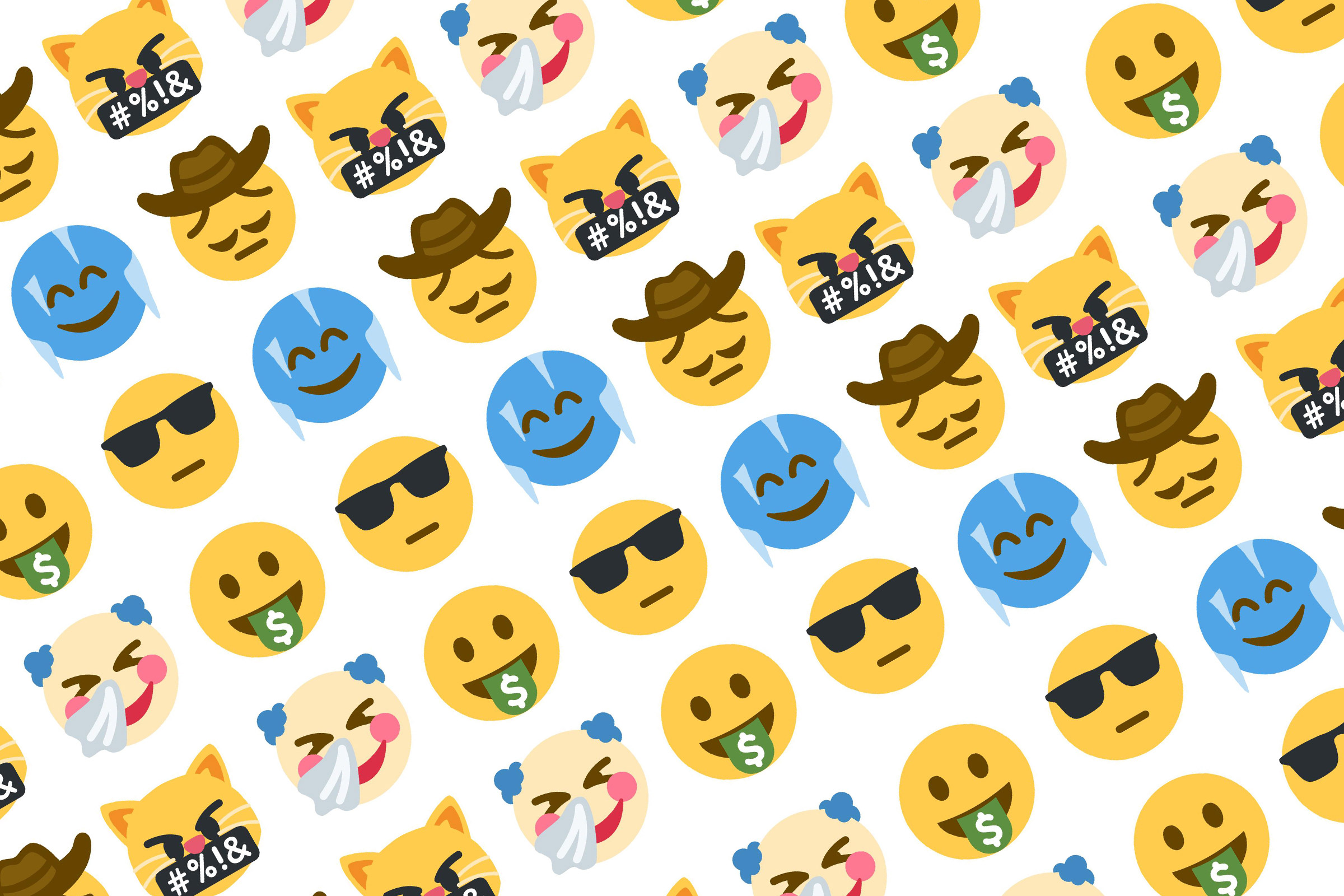
Ever tried but failed to find an emoji to describe that certain je ne sais quoi while you’re texting a friend? Wish you could take the best of the “surprised face” emoji and add a bit of “smiling cat” to the mix to really get your point across? Unfortunately, there’s no way to blend different emojis on the spot. But you might find what you’re looking for in Emoji Mashup Bot, a Twitter account run by 18-year-old developer Louan Bengmah that creates a randomized mashup of two different emoji every hour.
Bengmah, who is studying web development in France, began learning to code less than a year ago. He created Emoji Mashup Bot after experimenting with the programming language Processing. “I thought making a Twitter bot would be a fun exercise,” Bengmah said in an email. “So I watched some great YouTube tutorials, and while I was experimenting I found the idea of merging two emojis together amusing and interesting. It took me approximately a week.”
The results are astounding. While some of the completely randomized combinations are pretty tame (like the confused-nauseated combo), the hundreds of other mashups are surprising, gross, or, in some cases, amusingly suggestive.
For the uninitiated, emoji are special characters, like a winking face, dancing girl or, yes, pile of poop. They’re approved and distributed by the Unicode Consortium, which creates guidelines needed to recreate said characters properly, no matter what device you’re using. Each emoji has a unique identification code that specifies its general appearance. Companies like Apple and Microsoft have some flexibility when it comes to making corresponding emoji, which is why a smiling emoji on your smartphone might look different than the one on your PC.
If you’re chomping at the bit to get your hands on these custom mashups to send to your friends, you’re probably out of luck. That’s because each emoji added to the Unicode Consortium’s current list of over 3,000 characters (including permutations) must be proposed, discussed, and approved by that group. A variety of factors influence whether or not the Consortium approves or rejects a proposed emoji, including criteria like readability, evidence of potential popularity, and similarities to existing emoji. On average, the Unicode Consortium only approves around 70 emoji each year. But as Bengmah says, they do take requests.
“People can suggest to Unicode new emojis to be added up in the list,” he says. “And maybe one of the mashups made by the bot will be suggested and accepted, but there’s no chance they’ll add several ones.”
Still, Bengmah’s mashup bot could make finding new potential emoji a lot easier, and provide the evidence the Unicode Consortium needs to approve some additions. “There are some mashups that really depict new emotions and I know for a fact that a lot of people already use them in their conversations,” says Bengmah.
He’s not waiting for the Consortium to act. Instead, he’s working with other developers to create smartphone-friendly sticker packs of his emoji mashups so people can share his creations as images. Still, those sticker packs are only useful in particular messaging apps (like iMessage), so don’t expect them to proliferate the way emoji do across the web. “They won’t replace the regular emojis which are way easier to use,” says Bengmah, “but I hope people will keep using them for a long time.”
More Must-Reads From TIME
- The 100 Most Influential People of 2024
- The Revolution of Yulia Navalnaya
- 6 Compliments That Land Every Time
- What's the Deal With the Bitcoin Halving?
- If You're Dating Right Now , You're Brave: Column
- The AI That Could Heal a Divided Internet
- Fallout Is a Brilliant Model for the Future of Video Game Adaptations
- Want Weekly Recs on What to Watch, Read, and More? Sign Up for Worth Your Time
Write to Patrick Lucas Austin at patrick.austin@time.com